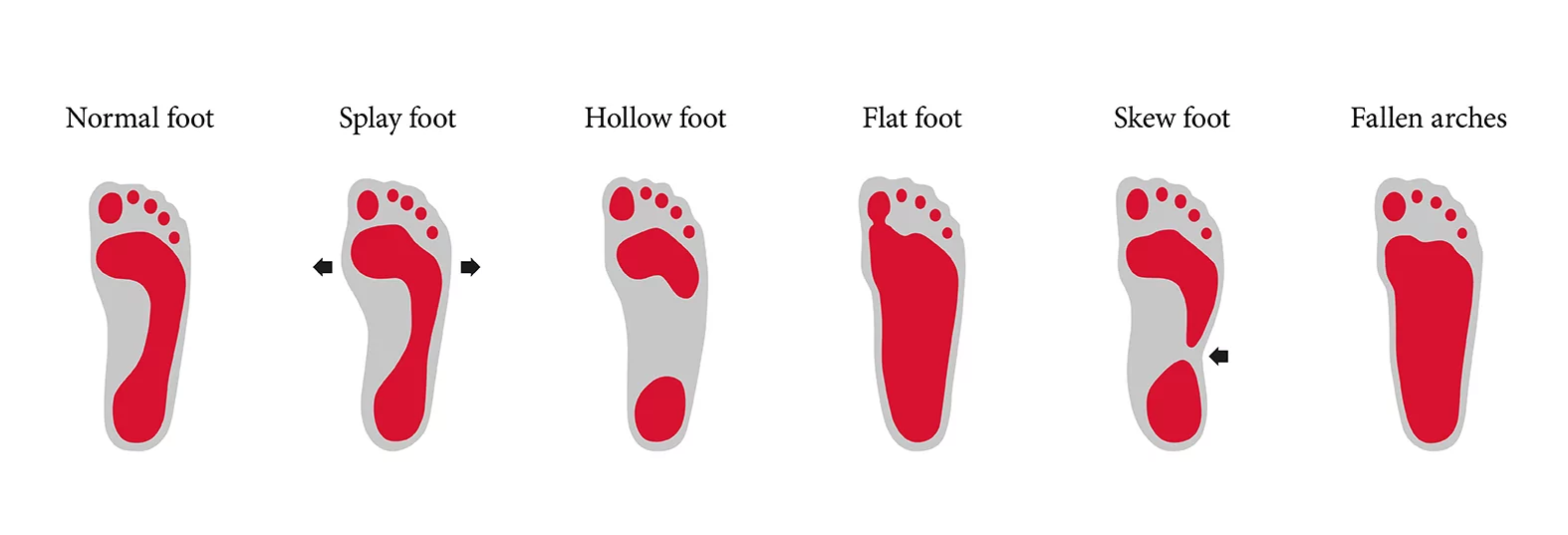THE MOST COMMON FOOT AILMENTS

You can make accurate suggestions on possible foot ailments based on someone’s foot print. Just try it yourself by painting the sole of your foot with children’s finger paint (non-toxic, water-soluble and easily removable) and making a print on a sheet of paper. You should repeat this procedure with the other foot too, because your feet can be quite different. Do you have children or grandchildren? Then make examining how healthy your feet are fun by getting your child or grandchild involved. Or ask your partner to try with you. That way, checking the health of your feet will never be a chore. If there are any misalignments or if you are experiencing discomfort in your feet, then it is best to go and see the doctor. A lot of the time, it is fine to just visit your GP, however they may need to refer you to a specialist i.e. the orthopaedist.
A detailed explanation of the individual foot ailments can be found below.
What your favourite shoes say about your feet and running style
Interesting insights and points on how your own shoes can give you bad posture. Because how your soles have worn indicates a lot about your feet and running style. Just pick up your pair of your favourite shoes (the ones you wear most often) and inspect the sole closely.
1. Normal pattern of wear on the shoes

A worn shoe with no obvious misalignments has signs of wear on the rear outer shoe edge and forefoot area. Abrasion at these outer edges of the heel area and in the forefoot area is completely normal. In the diagram, you can see quite even wearing with slight stress on the inside of forefoot, which suggests the (correct) rolling movement over the big toe.
2. Heavy wear on the inner rim of the shoe

This is what the worn shoe looks like with a clear “X” leg axis malposition (knock-knees) or with strong inward rolling at the lower ankle (overpronation). These misalignments put more strain on the inside of the shoe. You may even notice that the shoe is slightly tilted inwards if you look at it whilst it is not being worn because it has been misshaped over time due to regular uneven weight distribution.
3. Stronger abrasion on the outside of the shoe

This is what the worn shoe looks like with a “0” leg axis malposition (bow legs) and/or supination misalignments (too much outward rotation) in the lower ankle joint. Here, there is much more stress on the outer edge of the shoe. When this happens, unlike the normal pattern of abrasion on the shoe, the entire outer edge of the shoe is rubbed off.
4. Significant abrasion in the outer forefoot area

This is an image of what the sole looks like with extremely pronounced supination (outward rotation). Here, abrasion is mainly present on the outer edges of the forefoot area.
5. Significant wear of the outer sole in the middle of the forefoot

In a pronounced splay-foot, the point of maximum pressure is below the centre of the forefoot. Pressure in the forefoot is not spread over a wide area as it should be due to malpositioning, but is rather concentrated in the middle instead. Abrasion of the outer soles can be seen in these respective areas. In addition to the outer sole, this effect can also be seen in the insole, which sinks down in the middle.
 DE
DE EN
EN FR
FR NL
NL
